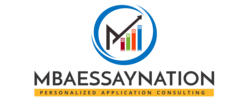Nine years. That’s how long it took me to make it to ISB.
I first heard of ISB in 2001 when one of my school seniors joined its founding batch.
Back then, ISB was the only business school that had a one year MBA program and a strict criterion of admitting only those with prior work experience. It was also the only school that mandated laptops for its students. It may be remembered that the early 2000s were characterised by bulky desktops and smartphones were still in the realm of science fiction. And with an admission fees that costed upwards of a million Indian Rupees, ISB was far more expensive than its peers such as IIMs.
Beyond the intake sifting and fees, I could observe that there was something unique about the type of students who got in. They were all achievers in their own right and an endorsement from ISB could only push them towards deepening their footprints in the sands (representing their chosen fields).
Epiphany struck in December 2002, when I first saw ISB’s majestic building standing tall amidst a sprawling verdant campus. I just knew that someday I was going to study at this institution.
The next few years were routine – I completed my post-graduate studies, started my career in IT, switched companies, and travelled abroad. All through these, I could never forget my dream of studying at ISB. Occasionally, I would look up ISB’s website, even download its application form but when I would see the application essays, I’d have second thoughts about applying. What achievements could comprise my narrative? Would my achievements appear pale compared to those of the accomplished individuals applying to ISB? I would often compare myself with those who made it to ISB and conclude that I simply lacked their calibre.
In 2009, with more than four years of work experience, I started assessing my career goals. I was working in a niche technology domain and passionate about it. But I was increasingly growing restless about an underlying untapped potential for it in emerging markets. An outline of a roadmap was gradually forming in my mind about how I wanted to promote the technology and its applications to prospects. The more I thought, the more I realized that in the long run, I would like to start my own company to build and market an enterprise software based on the same technology. I continually thought about how I could strategize and implement my plans. I realized there were several weaknesses that could act as hurdles in achieving my dreams; limitations that I could not address in my then role. Overcoming the obstacles meant that I had to acquire new skills. Getting an MBA seemed to be the next logical step.
By early 2010, I decided to start preparing for GMAT. Getting back to studies after 7 years was difficult especially between juggling tough deadlines at work and managing my home. Consequently, my exam preparation alternated between days of relentless studying and long stretches of working on deliverables at work. My first attempt at GMAT in November 2010 ended up in a score of 660. I was dejected. Though my family wanted me to still go ahead and apply to ISB, my confidence failed me. I also could not imagine preparing for the exam again. The pressure of multi-tasking both personal and professional commitments along with my studies became a major deterrent. I avoided my preparation books asthey were nothing but reminders of my failure. After more than three months, I slowly started to study again. When my work yet again threatened to disrupt my studies, I decided I needed a more structured and disciplined approach if I wanted to succeed. I enrolled for a local test preparation services in June 2011.
I was able to quickly grasp the concepts taught by the instructor and connect the dots between theory and test questions. Learning in a batch of more than 40 students proved to be a fine balance between competitiveness and collaboration. The best thing about this decision was that I regained my confidence. Two months later, I re-took GMAT and scored 720. I was both relieved and disappointed. I had crossed the coveted 700 mark but I could have done better. I cut short fretting over my score. ISB’s round 1 deadline was only two weeks away. I knew I had barely enough time to focus on my application.
This was an intense period for me and switching mentally from test preparation to essay writing mode was difficult. I knew I needed guidance to help me develop greater clarity to draft my essays. I decided to avail services of an application consulting company and I was assigned a mentor who was an ISB alum.
The insights provided by my mentor proved highly valuable. To begin with, I was unsure about the kind of experiences I could include as part of the essays. Allaying my fears, my mentor validated that my narratives were in fact suitable to be written for the essays. This was a huge morale booster.
Now a common problem in writing that we often overlook or assume is the ease with which our writing can be comprehended by others, especially by those who do not know us or about the events that we are writing about.
My mentor’s intelligent comments on my essays allowed me to include the right amount of detail while building the context. This greatly helped me to develop a coherent structure for my content.
I was able to complete my essays on time and submitted my application in September 2011. After the frenzy of keeping up with the exam and application deadlines, I missed the hectic schedule for a while.
In November 2011, I got my acceptance letter from ISB. I was elated. My efforts spanning nearly two years with its concomitant highs and lows had at last helped me realize one of my long standing dreams.
Even now I do look back at my preparation days with a tinge of nostalgia and remember them often to draw inspiration for the days to come.
As Martin Luther King Jr. said – “Take the first step in faith. You don’t have to see the whole staircase, just take the first step.”
Deepthi Rajan





![CMU Tepper MBA Essays for 2022-2023 – Essay Questions, Tips, and Deadlines [With Sample Essays Inside]](https://mbaessaynation.com/wp-content/uploads/2022/09/MBAEssayNation-Blog-Post-Header-Image-4-500x383.png)

